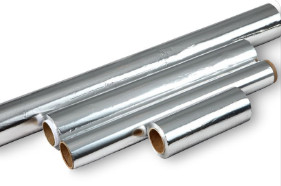
Bright Nickel-Iron alloy electroplating process ; Substitute nickel plating ; FI-F2
-
Highlight
surfactant chemistry
,electroplating surfactant
-
TypeBrightener
-
UseNickel-Iron Alloy Electroplating
-
CharacteristicSuitable For Electroplating Tubular Products
-
Place of OriginChina
-
Brand NameFENGFAN
-
Model NumberFI-F2
-
Minimum Order QuantityNegotiable
-
PriceNegotiable
-
Packaging DetailsStandard export packaging
-
Delivery Time15-25 work days
-
Payment TermsL/C, D/A, D/P, T/T, Western Union, MoneyGram
-
Supply Ability200000pcs/day
Bright Nickel-Iron alloy electroplating process ; Substitute nickel plating ; FI-F2
Bright Nickel-Iron alloy electroplating process ; Substitute nickel plating
FI-F2
FI-F2 bright nickel-iron alloy electroplating process is suitable for the electroplating of tubular products, and can be widely used in protective-decorative electroplating of bicycles, furniture, sewing accessories, daily hardware and other products. Using the bright nickel-iron alloy electroplating additive produced by our company, the obtained coating is smooth, bright, and has good ductility. The process bath is stable, easy to operate, saves 15-25% of nickel compared to bright nickel plating, has low nickel content in the base solution, low preparation cost, less carry-out loss and good economic benefits.
1. Bath composition and Operation condition
| Formula and Operation Condition | Range | Optimum |
| Nickel sulfate | 180-200 g/L | 200 g/L |
| Nickel chloride | 40-50 g/L | 45 g/L |
| Boric acid | 40-50 g/L | 45 g/L |
| Ferrous sulfate | 10-20 g/L | 15 g/L |
| Stabilizer S-1 | 20-30 ml/L | 25 ml/L |
| Brightener F-2 | 0.5-0.8 ml/L | 0.5 ml/L |
| Softener P-2 | 10-15 ml/L | 12 ml/L |
| Temperature | 55-65℃ | |
| pH | 3.0-3.5 | |
| DK | 2-5 A/dm2 | |
| DA | 1-3 A/dm2 | |
| Area ratio of nickel anode to iron anode | 10-15:1 | |
| Material of iron anode | DT1-DT4 | |
| Stirring | Cathode movement or liquid stirring | |
2. Bath Make-up
1) Clean the standby bath and add 2 / 3 volume of pure water.
2) Add the required amount of nickel sulfate, nickel chloride and boric acid, heat and stir until completely dissolved.
3) Heat to 60 ℃, add 2-5g / L powdered activated carbon, stir for 2 hours, and then stand still for 8 hours or overnight.
4) Filter the solution, add the calculated amount of stabilizer S-1 and stir evenly.
5) Filter the solution into the plating bath and add pure water to close to the final volume.
6) Adjust the pH of the solution to 3.0-3.5 with 10% sulfuric acid.
7) Add the calculated amount of ferrous sulfate.
8) Heat the solution to 60 ℃, use corrugated plate as cathode and electrolytic at current density of 0.2-0.5a/dm2 for 6-8 hours.
9) Add the required amount of additives, mix well, add pure water to the final volume, adjust the pH to the process range, and try plating.

